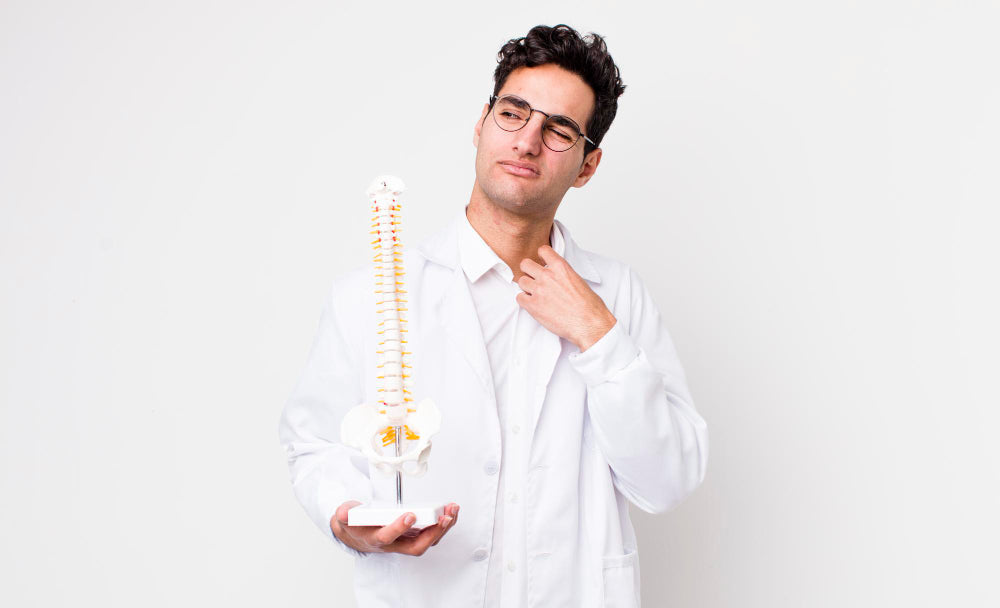Spine health is often overlooked until back pain interferes with daily life. For men over 30, spinal wellness becomes especially important as the spine begins to show signs of wear from years of work, stress, poor posture, and inadequate movement. Fortunately, there are natural, sustainable ways to protect and strengthen spinal health—including the consistent use of heat therapy.
Why Spine Health Matters After 30
By the age of 30, the intervertebral discs—cushion-like structures between the vertebrae—begin to lose hydration and elasticity. Muscle imbalances, sedentary jobs, and physical strain can further stress the spine. Left unchecked, these issues can lead to chronic back pain, herniated discs, reduced mobility, and poor quality of life.
Common spinal issues in men over 30 include:
-
Degenerative disc disease
-
Lumbar strain and stiffness
-
Sciatica and nerve impingement
-
Herniated or bulging discs
-
Poor posture-related discomfort
Maintaining spinal wellness isn't just about pain prevention—it's key to preserving energy levels, mental focus, physical strength, and overall quality of life.
Best Practices for a Healthier Spine
1. Daily Movement and Strength Training
Spinal stability relies on strong core and back muscles. Men should include exercises like planks, bird-dogs, squats, and deadlifts with proper form. Daily movement, such as walking or stretching, counteracts the risks of sedentary work.
2. Posture Awareness
Poor posture is a major contributor to spinal degeneration. Use ergonomic chairs, keep screens at eye level, and avoid slouching while driving or sitting. Simple habits like standing tall with shoulders back make a big difference.
3. Mobility and Flexibility
Incorporate yoga or mobility drills to maintain flexibility in the hips, thoracic spine, and hamstrings—all of which influence spinal alignment.
4. Healthy Weight Management
Excess abdominal fat places pressure on the lumbar spine. Maintaining a healthy weight through diet and exercise protects spine integrity and reduces inflammation.
5. Sleep Support
Choose a supportive mattress and pillow that keep the spine aligned. Side sleeping with a pillow between the knees can help reduce lumbar strain.
6. Nutrition for Spinal Tissues
A diet rich in anti-inflammatory foods (omega-3s, leafy greens, berries) and sufficient hydration supports disc health. Avoiding excessive sugar and processed foods can prevent inflammation that impacts spinal nerves.
Heat Therapy: A Gentle Powerhouse for Spine Support
Heat therapy, when used regularly, can significantly aid in maintaining spine health. It’s not just for treating pain after an injury—it can be a proactive tool for keeping your back flexible, relaxed, and resilient.
Benefits of Heat Therapy for the Spine
-
Increases Blood Flow: Promotes circulation in the back muscles and discs, delivering oxygen and nutrients essential for healing.
-
Relieves Tension: Soothes tight or fatigued muscles caused by daily stress or overuse.
-
Improves Flexibility: Warm muscles are less prone to injury and allow better range of motion.
-
Reduces Chronic Pain: Heat reduces pain signals and muscle spasms often linked to degenerative spinal conditions.
How to Use Heat Therapy Effectively
-
Infrared Heating Pads and Belts: Penetrate deeper than surface-level heat and are ideal for lower back pain.
-
Warm Baths or Showers: Relax the entire musculoskeletal system.
-
Saunas or Steam Rooms: Encourage muscle relaxation and detoxification.
-
Regular Application: 15–30 minutes, 3–5 times per week can make a difference, especially when combined with movement and strength work.
Pro Tip: Always hydrate before and after heat sessions to support circulation and tissue recovery.
Warning Signs Men Shouldn’t Ignore
If you experience any of the following, consult a healthcare provider:
-
Persistent pain lasting more than two weeks
-
Pain radiating down the legs (possible nerve involvement)
-
Numbness or tingling
-
Pain during rest or sleep
Early intervention prevents long-term damage and enables a faster return to mobility.
Building a Spine-Healthy Lifestyle
Spine care isn’t a one-time fix—it’s a daily commitment. A routine that includes strength, movement, posture awareness, recovery practices like heat therapy, and good sleep hygiene sets the foundation for lifelong spinal wellness.
Sources
-
American Chiropractic Association: https://www.acatoday.org
-
Harvard Health Publishing: https://www.health.harvard.edu
-
Cleveland Clinic: https://my.clevelandclinic.org
-
National Institute of Neurological Disorders and Stroke: https://www.ninds.nih.gov
-
Spine-health.com: https://www.spine-health.com



